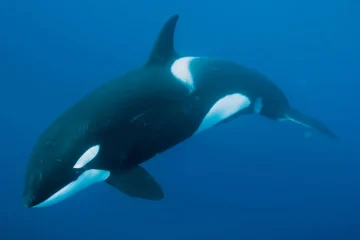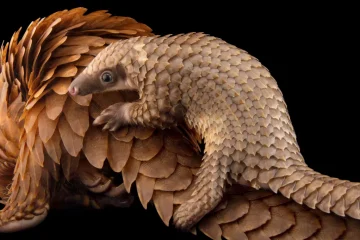STOP! Stop whatever you’re doing and for a moment, imagine this… You’re walking along to the sound of rushing water, a cool calming breeze kisses your face as you turn around to look at the blue water running over little pebbles, glistening in the morning sun as the light bounces off its little waves. Now how did that feel? Did you ever think that a river could give you such a sense of peace and tranquility? And that is why geographic features like this are underestimated. We still don’t truly understand their value. But today’s gonna be different. Today, on World Rivers Day, join me as I take you on a journey to discover the marvels of rivers.

A river is a ribbon-like body of water that flows downhill because of the force of gravity. A river can be wide and deep, or shallow enough for a person to wade across. Some rivers flow year-round, while others flow only during certain seasons or when there has been a lot of rain. The largest rivers can be thousands of miles long.
Fun fact: The Grand Canyon


Did you know that the formation of one of the greatest geological wonders known widely as The Grand Canyon, was due to the erosional power of rivers? Well, it indeed was! Who knew that rivers had such a power within them?
Water that flows in rivers is fresh, meaning that it contains less than one percent salt in it. However, rivers still carry and distribute important salts and nutrients that help support plant and animal life. Because of this, some of the most biodiverse habitats on our planet can be found around rivers.

Despite covering less than 1% of the earth’s surface, freshwater ecosystems provide habitat for more than 100,000 known wildlife species! That means there could be hundreds of thousands of more undiscovered species in them! Wetland habitats can store huge amounts of carbon and act as natural filters, removing nutrients that can cause problems like algal blooms in open water downstream. So they are very important in competing with other environmental issues as well.
So far we’ve only talked about the bright side of rivers. But now it’s time to shed light on its dark side. Did you know that many of the rivers today are struggling to cope in the face of so many challenges? Humans use rivers for irrigation in agriculture, for drinking water, for transportation, to produce electricity through hydroelectric dams, and for leisure activities like swimming and boating. Each of these uses can affect the health of a river and its surrounding ecosystems.
When they’re healthy, rivers are home to incredible levels of biodiversity—housing some of the world’s most iconic species, but sadly, since 1970, freshwater species have seen an 83% decline globally and the main cause for this is human activities.

Pollution is another major threat our rivers have to face today. Urban pollution, agricultural, industrial, as well as sediment and chemical pollution, all contribute to this issue.
We humans are lucky enough to have clean, running water in our homes, but other wildlife do not have the same luxury. Many rely on rivers for their water intake, so when issues like droughts cause rivers to dry up, it can cause wildlife to suffer and threaten ecosystems. So even minor events of droughts can have adverse effects on these organisms.

Unsustainable water abstraction and climate change have led to the reduction of water levels in rivers. When this happens, the concentration of pollutants increases, often to a higher level than wildlife and plants can tolerate. Water scarcity also decreases the concentration of oxygen in the water, and causes the temperature of the water to rise, which again affects the freshwater ecosystems greatly.
So what is today about?
Today – the 25th of September 2023, is about raising awareness on the many values of rivers, how it is degraded because of humans, and the need to take corrective measures to fix this as well as working together to protect these rivers. Mark Angelo, a river conservationist, founded this day, and it was first celebrated in 2005. More than one million people in over 100 countries will take part in today’s celebrations, including stewardship programs and various events such as visiting local rivers, cleaning up creeks, paddling and rowing games, etc.
So we can enjoy these treasures while they last, or we can take measures to ensure that even future generations have the chance to see their beauty.
By restoring rivers and the habitats that surround them, we can both mitigate and adapt to climate change. It can also increase connectivity between habitats, providing avenues for species to alter their distribution in response to climate change.

Improving agricultural practices and farm infrastructure to address chemicals, surface run-off, and the erosion of soil, restoring natural features such as wetlands and woodlands which act as a natural filter for pollutants, creating green infrastructure in towns and cities, to slow the flow of surface run-off and reduce the risk of sewer systems overflowing, monitoring water quality to identify misconnected pipes and pollution hotspots, raising awareness about pipes and drains and their impact on water quality are all practices we can follow to fight this disaster. If we could do this and reduce water consumption, we could limit this impact on wildlife as well as humans. So, the choice is up to us. Will we keep on neglecting these wonders, or will we finally start giving back to them, as they have done for us, for millennia?
Written By:
Leandra Shiyara,
1st Year Undergraduate,
Biological Science Stream,
Faculty of Science,
University of Colombo.
References:
- Mishra, M. (2023). World Rivers Day 2023: Date, Theme, History & Celebration. Edudwar. https://www.edudwar.com/world-rivers-day/
- River. (n.d.). https://education.nationalgeographic.org/resource/river/
- Trust, R. (2021, September 22). Key issues. The Rivers Trust. https://theriverstrust.org/key-issues
Image Courtesy:
- Title Image: https://biturl.top/2ueA7f
- 1st Content Image: https://biturl.top/AzmqMb
- 2nd Content Image: https://biturl.top/EfUnUz
- 3rd Content Image: https://biturl.top/n2UVVz
- 4th Content Image: https://biturl.top/A3INF3
- 5th Content Image: https://biturl.top/MVn2mi
- 6th Content Image: https://biturl.top/6FJFrq
- 7th Content Image: https://biturl.top/fi2Ubu



0 Comments